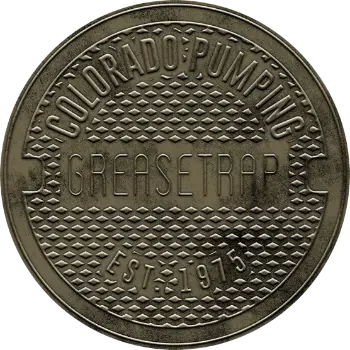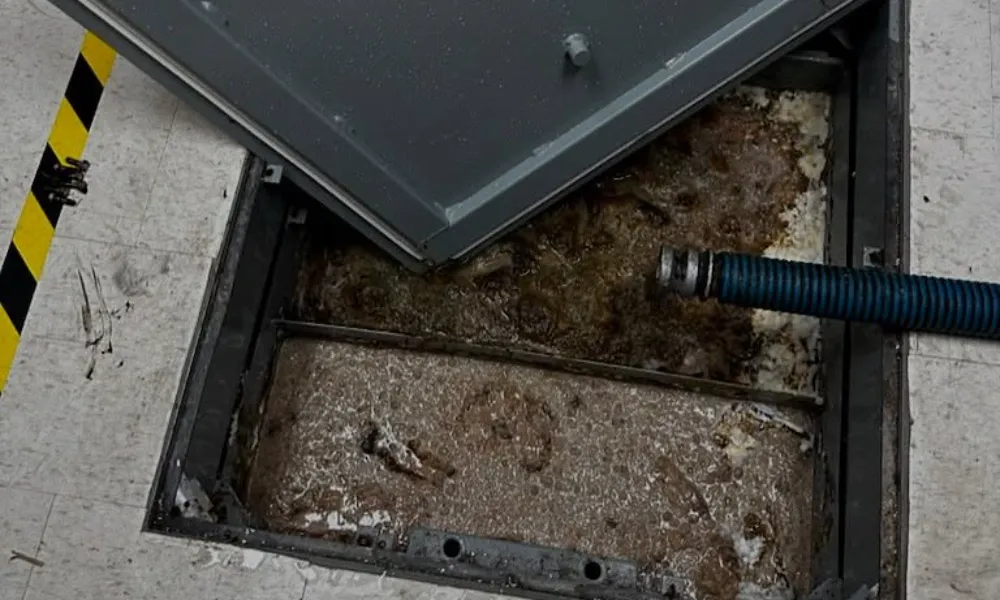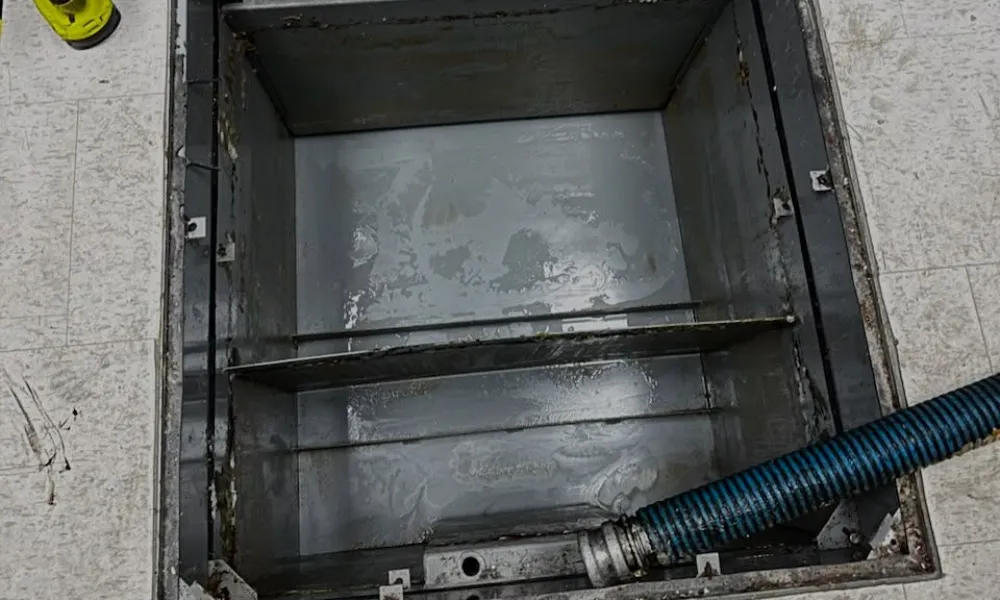We Pump Septic Tanks In Denver CO
Including Arvada, Golden, and Surrounding Areas
Colorado Pumping: Premier Grease Trap Pumping Services Across Colorado
Colorado Pumping offers exceptional grease trap pumping services throughout key areas in Colorado, including Arvada, Aurora, Centennial, Denver, Golden, Lakewood, Littleton, Thornton, Wheat Ridge, and Westminster. In the realm of commercial kitchens, grease interceptors or 'grease traps' play a vital role in wastewater management. They are designed to separate and contain fats, oils, and grease – collectively known as FOG – preventing these substances from entering the city sewer systems. These traps are essential for ensuring that only properly treated water flows through your establishment's plumbing lines, thereby maintaining overall sanitation and hygiene.
Our specialized grease trap pumping services are dedicated to keeping these systems running efficiently and effectively. We help protect your kitchen operations and contribute to the environmental health of the Colorado community. Rely on Colorado Pumping for dependable, timely, and comprehensive grease trap pumping solutions in Arvada, Aurora, Centennial, Denver, and beyond.
At Colorado Pumping, we are not just a wastewater management company; we are experts in grease trap pumping and maintenance, deeply rooted in the Denver area and serving a broad range of locations across Colorado. Whether your establishment needs routine grease trap maintenance or you're in urgent need of addressing a kitchen plumbing emergency, Colorado Pumping is at your service. We offer unparalleled grease trap pumping services across Arvada, Aurora, Centennial, Denver, Golden, Lakewood, Littleton, Thornton, Wheat Ridge, and Westminster. With our expert team, you can ensure your commercial kitchen operates seamlessly, while upholding environmental compliance and efficiency.
Facilities We Offer Grease Trap Pumping To:
1. Restaurants and Food Services: This category includes fast food chains, casual dining establishments, fine dining restaurants, food courts in malls, and small local diners. Essentially, any establishment where food is prepared and served to customers will have a grease trap and if they have a grease trap, we can service it!
2. Hotel Kitchens: Hotels often have extensive cooking operations to serve their guests, making grease traps essential for their commercial kitchens. This also extends to motels that offer dining services.
3. Cafeterias: This includes cafeterias in various settings such as schools and universities, hospitals, corporate office buildings, and government facilities. These places often serve a high volume of meals, which leads to substantial grease waste that needs to be managed.
4. Industrial Facilities: Certain industrial facilities, especially those involved in food processing, will utilize grease traps. This includes meat processing plants, canned food factories, and other food-related industries.
5. Manufacturing Units: Some manufacturing units, particularly those involved in the production of food and beverages, require grease traps to manage the byproducts of their manufacturing processes.
6. Bakeries and Patisseries: These establishments generate fats and oils during the baking and food preparation process. They need grease traps to prevent these substances from entering the sewage system.
7. Supermarkets and Grocery Stores: Large supermarkets often have delis, bakeries, and butcheries that create grease waste. Grease traps are necessary to ensure this waste doesn't clog the wastewater system.
8. Event and Conference Centers: Large venues that cater to events, such as weddings, conferences, and conventions, often have sizable kitchen facilities that require the use of grease traps.
9. Mobile Food Vendors: Food trucks and mobile caterers often have grease traps as part of their wastewater management system.
10. Residential Buildings: While not as common as in commercial establishments, some large multi-unit residential buildings or complexes with shared kitchens may also utilize grease traps.
There are thousands of businesses in Colorado that identify as food services operations that discharge wastewater containing F.O.G (fat, oil and grease). These facilities must install and maintain a grease trap/interceptor in accordance with local codes. If you own a busy restaurant or commercial food services facility you already know the importance of having your grease traps or grease interceptors pumped out regularly.
Fixtures Required To Be Connected To Grease Traps Are:
- Sinks used for washing pots, pans, dishes, cutlery and kitchen utensils, including pre-rinse sinks.
- Self-cleaning exhaust hoods installed over commercial cooking equipment.
- Commercial cooking equipment, such as tilt kettles, designed to discharge to a sewer or drain.
- Any fixtures that discharge wastewater that contains FOG (fats, oils or grease).
The size of your establishment, the size of your grease interceptor and the amount of FOG contaminated waste water you send down the drain will determine the frequency of your required pump outs. Waiting too long could result in clogs, foul odors, fines and other maintenance issues, so it’s recommended that busy facilities have their grease interceptors pumped out and rinsed every 1-3 months. Your specific situation may vary.
What Are The Most Common Sizes Of Grease Traps?
Grease traps can vary significantly in size based on the capacity required by the establishment. The size needed primarily depends on the volume of wastewater that the business produces, the number of fixtures (like sinks) that drain into the trap, and the local regulations.
Here are some of the most common sizes for grease traps:
- Small Indoor Grease Traps: These are typically installed under sinks in smaller establishments such as cafes or small restaurants. They range in size from 5 gallons to 50 gallons capacity.
- Medium-Sized Grease Traps: These are often found in medium-sized establishments like larger restaurants or school cafeterias. They generally have a capacity ranging from 100 to 2,000 gallons.
- Large Outdoor Grease Interceptors: These are typically installed underground outside the establishment and are designed for large food service establishments, such as busy restaurants, hotels, or cafeterias. Their capacity can range from 1,000 up to 10,000 gallons or more.
The correct sizing of a grease trap is essential to its effectiveness. If a trap is too small, it may not adequately handle the amount of waste, leading to frequent clogging or the need for more frequent pumping. If a trap is too large, it may not work effectively either, as the water could pass through too quickly for the grease to be adequately separated.
How To Prepare For Grease Trap Pumping
Preparing for our grease trap pumping service can ensure that the job is completed quickly, efficiently, and with minimal disruption to your business. Here are a few steps you can take to help make the process smoother:
1. Clear the Area: Make sure the area around the grease trap is clear of any obstructions. This includes removing any equipment, supplies, or debris that might be in the way. This will allow our technician easy and safe access to the trap.
2. Drain Cleaning: If possible, avoid using sinks and dishwashers that drain into the trap a few hours before the service. This allows the water and grease to settle, making the pumping process more effective.
3. Schedule during Off-Peak Hours: If possible, schedule the pumping service during a time when your kitchen is not busy. This could be early in the morning or during a typically slower business period. This reduces disruption to your business and allows our technician to work more efficiently. We are happy to schedule grease trap pumping around your schedule.
4. Maintenance Records: Keep maintenance and service records handy. This can provide our technician with useful information about the condition and maintenance history of the trap. If we have serviced your grease trap before we will likely have this information already and keep detailed records for the businesses we provide grease trap pumping for.
5. Communicate Any Concerns: If you've noticed any issues or concerns with the grease trap, such as strange smells, slow drainage, or backups, let us know in advance. This way we can then be prepared to address these issues during our visit.
6. Staff Awareness: Ensure your staff is aware of the scheduled service and know their roles. If they're needed to assist in any way, such as guiding the service provider to the grease trap, they should be prepared.
7. Ensure Easy Truck Access: Many of the grease traps we service require getting our truck close to the grease traps and this might mean vehicles will need to be moved in order to give our truck clear and easy access.
Taking these steps can help ensure that your grease trap pumping service goes smoothly and effectively, maintaining the efficiency of your establishment's operations. As always, Colorado Pumping is here to assist with any questions or concerns you may have about preparing for a grease trap pumping service.
If you need to have your grease trap pumped please call (303) 278-1884 or fill out our online contact form and we will get back to you promptly to schedule a time to provide services.


